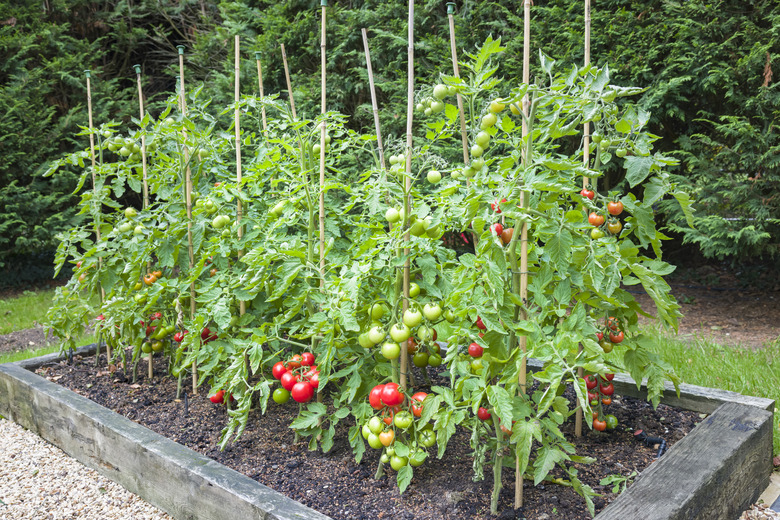Signs And Symptoms Of Overwatering Tomatoes
We may receive a commission on purchases made from links.
If you've never eaten a red ripe tomato straight from the garden vine, you haven't really lived. A large percentage of a ripe tomato is water, and a tomato plant cannot produce tantalizing fruit without adequate irrigation — but don't go overboard. At some point, irrigating veggies crosses the line into overwatering, and the tomatoes suffer.
Since tomatoes are America's favorite homegrown crop, anyone installing a backyard garden needs to understand the baseline rules for irrigating these delicious vegetables. These include when to water, how much to water, and how to tell when you are overwatering. Fortunately, most of these issues clear up when you cut back on water.
How to Water a Tomato Plant
How to Water a Tomato Plant
Tomatoes (Lycopersicon esculentum) are warm-weather crops that mature best in the long, sunny days of summer. They need loose, well-drained soil, ideally enriched with organic compost. They also need adequate water. "Adequate" is not a one-size-fits-all description, and the exact amount the plant requires varies depending on the age/stage of the plant, the soil in the garden, and the climate.
However, a few general guidelines are possible regarding how, how much, and when to water a tomato plant:
- Water tomatoes first thing in the morning to give the plant adequate moisture for a hot day.
- Water tomatoes generously during the days after their transplant to help them adjust to the garden.
- After the first few days, water the tomato plant once or twice a week, giving it 1.2 gallons of water per square foot of soil.
- Apply the water to the soil at the base of the plant, avoiding splashing any on the leaves or fruit.
- Five weeks after planting, mulch the base of the tomato plants with several inches of straw or bark chips.
- Provide afternoon shade for tomato plants when the temperatures soar.
Feel the Soil
Feel the Soil
If you really overdo the irrigation, you know right away that there is a problem. The tomato patch floods, the soil turns to mud, and the plants may tip as the ground becomes waterlogged. However, overwatering is not usually so extreme and not so easy to detect.
Touching the soil can still be helpful in determining whether you've overwatered. Obviously, the soil will be damp immediately after you water, but if it still feels wet two or three days later, the plant was given more water than it could uptake. It's a clear sign to cut back on water.
Inspect the Leaves
Inspect the Leaves
A common sign of moderate overwatering is yellowing leaves. Inexperienced gardeners may think the plant needs more water at this point, but yellow leaves do not indicate water stress. Rather, they occur when the plant can't uptake enough oxygen. This can happen when too much water is provided but can also be a sign that the soil drainage leaves something to be desired.
Likewise, wilting leaves can indicate too much irrigation. Wilting leaves are often the earliest sign of overwatering. It you see wilting leaves and the ground feels unnaturally wet, you've got your answer — overwatering — and it can be caused by heavy rain. If one morning you take a look at your tomato leaves and find them curling in on themselves, excess water is probably responsible.
Check the Fruit
Check the Fruit
As a tomato begins to ripen, it develops a thin, papery shell. Excess water during this period often causes that shell to crack. These cracks provide openings for pests to enter.
If you notice dark spots on the bottom of the tomato fruit that grow and spread, it could be blossom-end rot. Though the direct cause of this issue is a calcium deficiency, blossom-end rot is exacerbated by overwatering.
